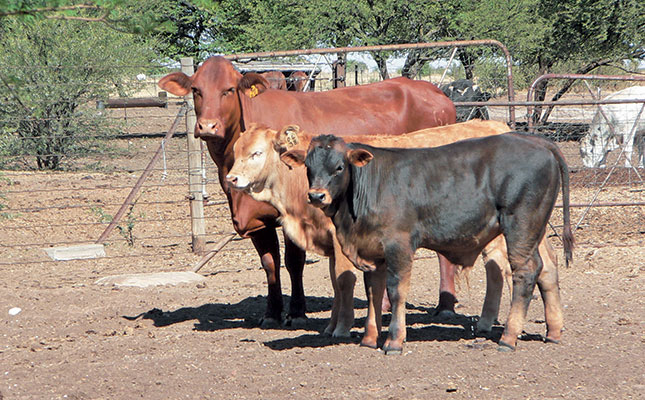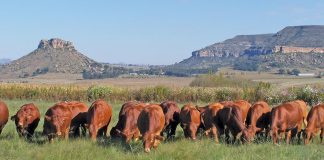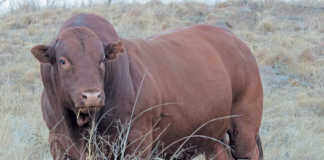
Twins are unusual in cattle, representing only about 2% of calvings in the South African national beef herd, which is in line with the global average.
At first glance, the economic advantages of twins appear obvious: more beef weaned, albeit from two lighter calves instead of one heavier one. However, this perceived advantage must be weighed against what it costs to produce twins in the first place, the cost of weaning them, and certain other practicalities.
READ MORE Is farming in SA worth the risk?
The bottom line is: to wean twins at an acceptable weaning weight, the cow must receive a high level of nutrition to enable her to maintain body condition. The oestrous cycle of a cow in poor condition will temporarily stop or she will not reconceive easily.
This inevitably means that successful twinning is associated with increased input costs.
The local scenario
So, where is its place in the South African beef industry, if in fact it has a place at all?
According to well-known beef consultant and cattleman Dr Johan Meaker, beef prices in South Africa are increasingly declining. In 1999, he was already making this point: “As input costs have been increasing more rapidly than beef prices for many years, beef must be produced as economically as possible. This means extensively, off the veld, with minimum additional input.”
Since then, economic and environmental conditions in South Africa have become even more volatile, adding fuel to Maeker’s words. For this reason, added Dr William Gertenbach, then principal agricultural scientist at the KwaZulu-Natal Department of Agriculture, twinning was not a practical proposition in low-input veld beef production.
Prof Arthur Lishman, retired professor in reproductive physiology at the then University of Natal, concurred.
“Under extensive conditions in South Africa, cows are often already nutritionally stressed, offering no place for twinning. On the other hand, twinning does have potential under well-managed intensive conditions. But there may be practical problems, such as retained afterbirths.”
The question is, to what extent can such high reproductive efficiency in cattle be practically utilised in beef production? If a cattleman who produces a high level of quality forage on his farm can afford the increased input cost, and would like to pursue the question of twinning, how does he go about it?
There are a number of options, all requiring first-class management and nutrition to achieve the desired results.
Firstly, super-ovulating and synchronising cows with hormone injections, followed by artificial insemination (AI), would significantly increase the multiple conception rate. This treatment is expensive, however; it currently costs R8 150 per cow. But not every cow would be able to carry the twins to term. Those that could do so would require additional care and feeding, further increasing input costs.
A practical problem is to precisely adjust the hormone dose to produce twins and not triplets!
The second option, mooted by Prof Lishman, is to transfer in vitro fertilised embryos into an in-calf cow. Large numbers of oocytes can be obtained from an abattoir (some cows sent to slaughter are a good source of such material), matured in the laboratory, and fertilised in vitro with semen of selected bulls. The embryos can then be sexed and transferred to recipient cows.
However, the associated logistics and economics should be carefully considered.
A third option, once suggested by Prof Johan Grosskopf, Bonsmara breeder, former president of SA Stud Book and the Bonsmara Cattle Breeders’ Society of SA, as well as the honorary president of the SA Society of Animal Science, would be to implant an additional embryo into a cow in the early stages of gestation, or two or three embryos simultaneously into a recipient cow.
One could even consider splitting the cow’s own embryo.
But these are intensive and expensive options.
On the other hand, probably the best and most economically justifiable long-term option is to actively select for a high incidence of natural twinning without artificial stimulation.
According to Dr Pierre van Rooyen and Charl Hunlun of SA Stud Book and the International Committee for Animal Recording (ICAR) respectively, the heritability of twinning is difficult to measure and express. It is also significantly influenced by the environment. However, it is not necessarily as low as is commonly believed, varying from 3% to 11%.
Depending on how it is done, selection for twinning may be very slow to yield results and will have to be sustained over many generations. On the other hand, Hunlun points out that when the selection criterion is ovulation rate instead of twin births, genetic progress could be surprisingly rapid.
Repeatability of twinning in a cow is high (around 40%). This means that, if she has had twins once, the chances are good that she will again do so if maintained at a sufficiently high level of nutrition (more about this in the second part of this series).
US case study
The Ultra Genetics Herd, based in Nebraska in the US, followed this selection option for many years. The herd’s work in this regard was documented between 1992 and 1997 in a number of articles in scientific publications, such as the Journal of Animal Science notably by Dale van Vleck, Keith Gregory and their co-workers.
This careful selective breeding programme at the Roman L Ruska US Meat Animal Research Centre used cows of several breeds: Pinzgauer, Charolais, Simmentaler, Swedish (beef) Friesian, Swedish Red and White dairy cattle, Norwegian Red dairy cattle, Holstein, Hereford and Angus. All were either members of twins or had borne twins.
READ MORE Agri research in SA starts with farmers
The frequency of twinning in this herd increased to such an extent that, at the turn of the millennium, it could already offer heifers and cows with an average estimated breeding value (EBV) for a twinning frequency of 48%.
These ‘Barada Twinned’ cows were claimed to be capable of producing ultra-high total weaned weights in twins (about 500kg), enabling a cattleman to nearly double the production of weaned beef/cow/year.
Naturally, the proponents of this herd were very positive about the economic advantages of twins. Results from experimental work and computer simulation at the University of California and the University of Nebraska suggested that input costs per unit of beef produced could be reduced by 20% to 30% in that portion of a herd that produces twins.
Practical problems
The problems with twinning are all practical management problems, Prof Fanie Schoeman of the University of Stellenbosch pointed out.
Apart from the increased nutritional requirements, the cow and her calves must bond well with one another to avoid one calf being rejected. While the weaning weights of individuals in twins are between 85% and 90% that of singletons, they soon catch up, especially in a feedlot.
Neither is the inter-calving period (ICP) in a well-managed herd appreciably increased by twinning.
Provided the programme was well planned and managed, he stressed, twinning could have great economic benefits.
Prof Dietrich Volkmann of the Department of Reproduction at the Faculty of Veterinary Science, University of Pretoria concurred that, unlike in sheep or goats, twinning in cattle presented certain practical problems, such as the well-known phenomenon of the so-called freemartin calf (more about this next week in the second part of this series).
For further information, email [email protected]. Subject line: ‘Twinning in cattle’













